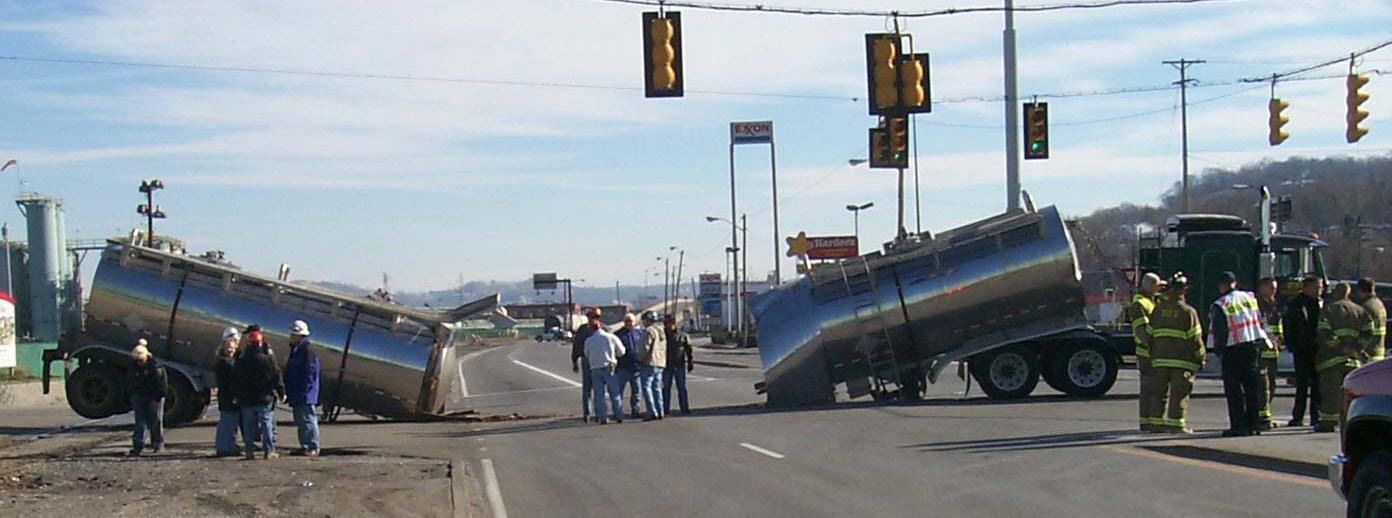
About 11:36 a.m. on January 5, 2002, a tractor pulling a cargo tank semitrailer departed the plant entrance and the trailer catastrophically failed. This failure occurred in the void area between the first and second tank, and the trailer broke into two pieces.
This cargo tank semitrailer was constructed with three independent stainless steel U.S. Department of Transportation (DOT) specification MC-307 cargo tanks. These tanks were joined to form a single trailer using stainless steel tie bands that overlapped the adjoining ends. The cargo tank motor vehicle was covered with flexible insulation and a thin stainless steel jacket that was connected to the frame assembly at the bottom of the trailer.
At the time of the accident, the cargo tank contained 5,152 gallons of polypropylene glycol. Although this chemical is not regulated by the DOT as a hazardous material and no release occurred, this type of specification cargo tank is authorized to transport hazardous materials requiring a specification package. There were no fatalities, injuries, or evacuations; however, the intersection was closed for seven hours. Damage, cleanup, and lost revenues were estimated at $18,000.
Don't Let This Happen To YOU!
Take the following steps:
-
Identify MC 307/312 cargo tanks manufactured prior to January 1983 with designs similar to the tank involved in the incident on January 5, 2002.
- Locate these tanks and determine the status of each tank (i.e. still in service, removed from service, has been sold, scrapped, etc).
- For those tanks no longer in service, gather documentation from the owner of the tank supporting the reasons why the tank is no longer in service.
- For those tanks still in service, inspect these tanks in accordance with Truck Trailer Manufacturers Association (TTMA) Technical Bulletin TB-121-03.
- The inspection documents should identify the tank; defects discovered; if any, during the inspection process; and if the tank was returned to service, the methods used to repair the defects.
- The inspection documents should be forwarded to the Federal Motor Carrier Safety Administration
Attention: Hazardous Materials Division
1200 New Jersey Avenue SE
Washington, DC 20590
NOTICE
All tanks still in service should be inspected no later than December 31, 2003 in accordance with TTMA Technical Bulletin TB-121-03. A Federal Register notice will be issued after December 31, 2003 addressing those tanks that have not yet been inspected.
FMCSA - HMSA - 01-03
|
 Safety & Security
Safety & Security Print
Print